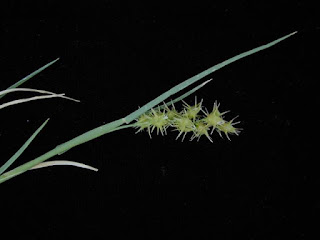Salt Problems with Houseplants, Caliche Soils, and Get Those Bulbs in the Ground ASAP!

Southwest Yard & Garden by Dr. Marisa Thompson Tulips and daffodils offer tons of color with remarkably low water requirements. This year at the NMSU Agricultural Science Center at Los Lunas we’ll also be sampling bulb blossoms for presence of beneficial insects. Stay tuned! Photo credits M. Thompson. Reprints from years past. Written by Dr. Curtis Smith, retired NMSU Extension Horticulture Specialist, with additions by Dr. Marisa Thompson. Question from 1997: What does it mean when they say our soil is calcareous? Answer: The term calcareous refers to the abundance of calcium, or lime, in our soil. This is due to the fact that our dry environment has not resulted in the leaching of calcium and other salts from our soils. Some of these salts, such as sodium, can be toxic to plants at the level found in some New Mexico soils. Calcium, however, is not toxic, but it does alter the pH, or acidity, of the soil, making it difficult for some plants to obtain the nutrient

